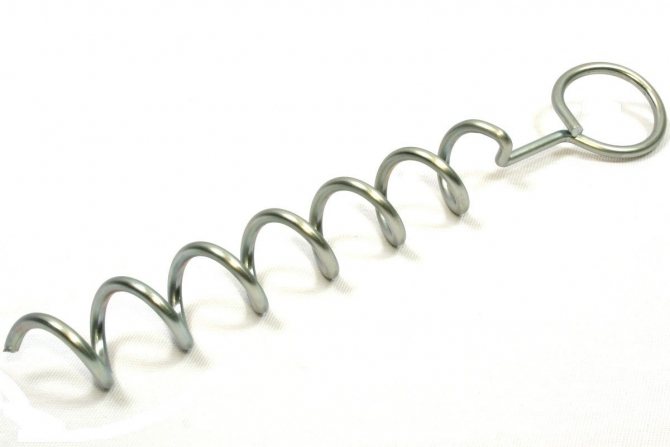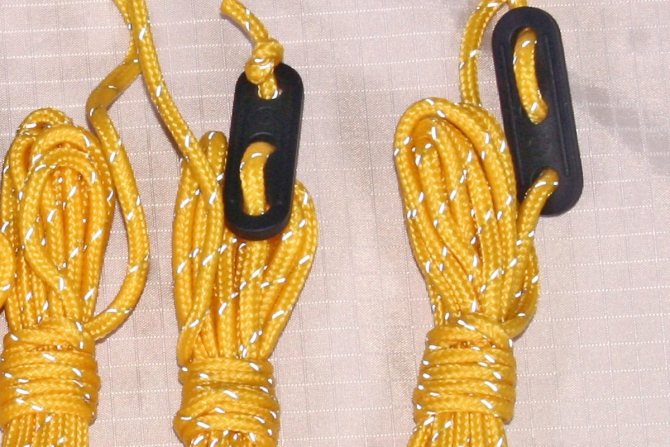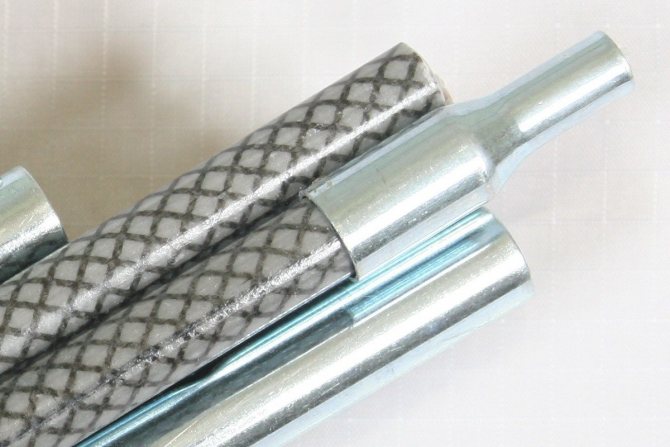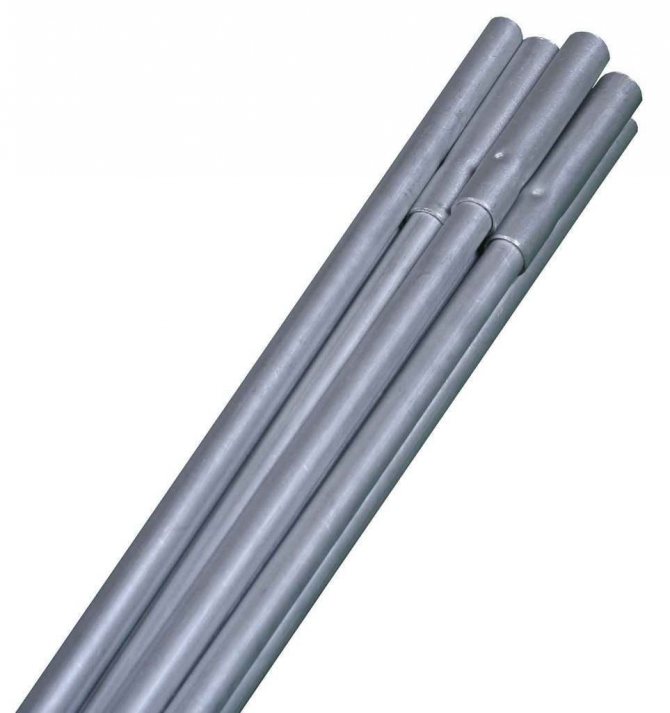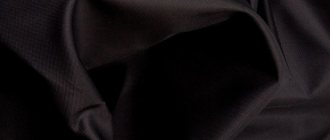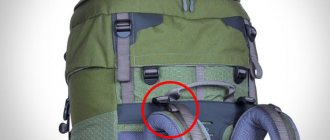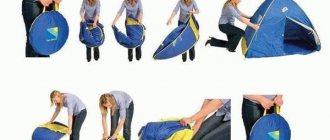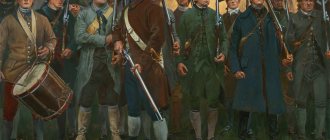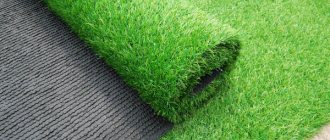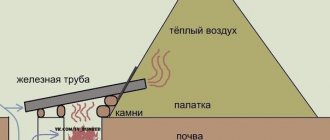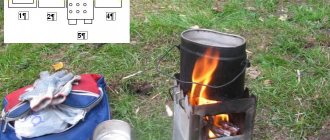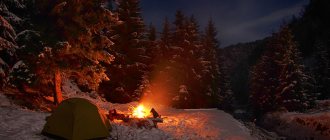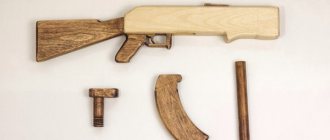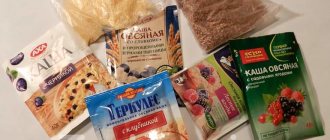Tourist (or trekking) tents are universal; they are used for trips to the lake, stationary camps and for multi-day hiking, cycling or water trips.
Even motorists for whom weight is not critical often prefer a tourist tent over a camping one: it is faster to set up, requires less space on the ground and is easier to find a clearing.
The tents presented in our store have awnings made of waterproof fabric, so they can withstand any bad weather. For additional wind resistance, use guy ropes with pegs.
We have prepared a detailed analysis of tent designs and the materials from which they are made. We will explain for what purposes certain functions are needed, what is better and in what case, and why. This will help you choose what you need.
How to choose a tourist tent - depending on what you need it for
When choosing a camping tent, keep in mind that some tents are cheaper, others are more durable. Some are lighter and more compact in packaging, while others have higher habitability.
To choose a tent, decide which criteria are more important to you - price, frequency of use, comfort, weight. The first question to ask yourself is: “How will I use the tent?”
| If you only occasionally get out into the forest for a weekend or a festival, one of the main selection criteria is price. Tent for a permanent camp (vacation, gathering) - parking in one place, but long-term use every year. The main criteria are durability and ease of use: high habitability, spacious vestibules, two entrances for better ventilation. The higher the price, the more comfort. If you are not camping with a tent, but going out on a route , then this creates an additional requirement - to withstand constant assembly and disassembly. Here you need a reliable metal frame. And if this is a hiking or cycling trip , less weight is also important, because you carry the tent on you every day. You will have to find a compromise between weight and comfort. To reduce weight you have to sacrifice habitability. |
In this article we do not consider tents for ski trips and mountain/climbing tents that can withstand strong winds and snow loads.
By purpose
The most important thing that you should initially decide on is the purpose of the tent, i.e. conditions under which it will be used. The following types of tents are distinguished by use:
- Trekking (plain) . Simple small tents designed for light hikes and overnight stays along hiking trails, in the forest and on the plains. Not very resistant to heavy rain and wind.
- Expeditionary . Similar to flat ones, but with increased wind and moisture resistance. Quite versatile in its class: suitable for both flat travel and mountain hikes of low difficulty.
- Assault (high mountain) . Such tents can be used in any conditions, but most often they are taken on difficult mountain hikes. A good storm tent will withstand any weather conditions. Assault tents are light, moderately roomy, and quickly assembled. The price sometimes stings.
- Camping . These are tents for lovers of auto tourism or multi-day stops in one place (at least 3-4 days). Due to their spaciousness, they are often taken for family vacations in nature. As a rule, camping tents are very comfortable: with high ceilings, large vestibules, many windows and good ventilation. But there are also several obvious disadvantages: high price, heavy weight and low heating capacity (due to the large volume). These also include all military tents for accommodating personnel of 8 or more people.
- Extreme. Everything related to extreme use. The prices are not much less than a Boeing wing; they are used at the poles, in high-altitude camps and other extreme sports.
2. How much space should there be in the tent to be comfortable?
The characteristics of the tent usually indicate the recommended number of inhabitants. Living alone in a 4-person tent is spacious and cool, but only if you are willing to carry it alone or transport it by car. In addition, in cold weather you can’t breathe alone in a large tent; it will be a little chilly.
Our advice is that if you are planning hikes only in warm weather and weight is not particularly important, you can choose a larger tent. For cases when it may be cold or it is important to reduce weight, it is better to buy a more compact tent.
Width
In a tent, there is 50 - 60 cm of width per adult inhabitant. The more space, the more convenient it is to fit in it. If weight is not important or the tent will stand for several days, you can allow 60 cm or more space per person. Such tents are usually made on a plastic frame.
On a long hiking route, it is important to reduce the overall weight of the group’s equipment. Therefore, more people can be accommodated in the tent. They usually only spend the night there and set off again in the morning. For routes with constant assembling and disassembling of equipment, tents with metal poles are more reliable, so when marking such tents, they are based on 50 - 55 cm per person.
Length
The standard length of tents is 210 cm. This is not enough for people with a height of two meters, but tents with a length of 220 - 230 cm are very rare.
Height
Tourist tents are usually produced with a height of 120 - 140 cm. The more people they are supposed to accommodate, the higher they are. To understand whether this is convenient or not, consider an example: how a person 170 - 180 cm tall changes into night thermal underwear in tents of different heights:
- the height of the tent is 120 - 130 cm, the most common for tourist tents - you can change the T-shirt in a vertical position, kneeling. But you will have to wear trousers while sitting or lying down;
- tent height is 140 cm - you can put on trousers while standing, but bending down;
- The height of the tent is 90 - 100 cm - you can’t squat here, you can only sit. The most convenient way to change clothes is while lying down. Ultralight tents that are needed for frequent movements are made so low.
to top >>
Tent selection criteria
- Form . The shape of the tent primarily affects its capacity and stability. For example, a hemisphere will be less spacious than a half-barrel, but at the same time more resistant to wind. The coffin-type shape is chosen by single travelers, and the tent-style tent will appeal to lovers of spacious tents.
- Size . Decide how many people should fit in your tent. The most common answer is 2-3 people. But perhaps you like to travel alone or, on the contrary, with the whole family? The number of seats in a tent is usually indicated in the description, but it can also be calculated based on the total living area. 50 sq.m. is enough for one person. cm. Height: the height of the tent determines not only the degree of comfort, but also how quickly the tent warms up. For example, one person in a spacious camping tent may not be able to warm it with his breath in a whole night. Tambour: Tents often have a vestibule for storing things. You will have to choose: a lightweight tent with things in the living compartment or a heavier but spacious tent.
- Number of layers . Tents come in single-layer and double-layer types. The most popular option is 2 layers. .
- Material. Nowadays, almost all tents are made of synthetic materials. If the tent is two-layer, then the outer layer (awning) should be durable and waterproof), and the inner layer, on the contrary, should be light and breathable. The bottom of the tent is usually also waterproof and reinforced.
- Polyamide fibers (Nylon, Nylon Taffeta, nylon): very strong, lightweight, abrasion-resistant, cheap, but at the same time unstable to ultraviolet radiation and stretch when wet.
- Polyester fibers (Polyester, lavsan, Poly Taffeta) - all the advantages of polyamide fibers + resistance to ultraviolet radiation and stretching. The downside is the high cost.
- Water resistance. A very important characteristic is the tent’s resistance to precipitation. This indicator is measured in the height of the water column, which is capable of supporting the tent awning.
- Up to 2000 mm: low water resistance. Withstands light rain.
- From 2000 to 3000 mm: medium water resistance. The tent can cope with almost any type of precipitation.
- 3000 mm and above: high water resistance. This tent can also be used in a tropical rainstorm.
- Frame. Tents can be framed or frameless. Frameless tents (gable, tent) benefit from compactness and lighter weight, but are usually less stable. Frame tents consist of arches that stretch the awning. There are 2 types of frame:
- Fiberglass. Various types of fiberglass are very common these days. Fiberglass is strong and flexible, there is no residual deformation, and the price is low. Cons: does not tolerate severe frosts, cannot be repaired if broken, weight.
- Aluminum and duralumin. Aluminum alloys are 1.5 times lighter than fiberglass and are durable, but more expensive.
- Seams . Everything is simple here. If you want to avoid annoying tent leaks, buy a tent with taped (welded) seams.
- Price . All of the above characteristics affect the price. The choice of a tourist tent is always individual; for different needs, prices can vary from 2-3 thousand rubles. up to 20-30 thousand rubles But in any case, don’t expect that for 1500 rubles. you will be able to find a great tent without any flaws.
How to choose the right camping tent? First of all, decide on your own needs and purpose of the tent, then study and choose the appropriate type of material, frame, shape of the tent... Be guided by the points described above. Well, then filter out the tents according to the price range that is acceptable to you.
Which tent is better to choose?
To clarify this issue, I advise you to remember a few simple characteristics that a good tent should have.
- Water resistance . One of the most important indicators (what is the point of hiding from the rain in a tent that leaks?). Water resistance varies and is measured in millimeters of water. Below 2000 mm - low water resistance. Above 3000 mm - very good.
- Good ventilation .
- Wind resistance . Also an important indicator, but not so critical, because Nowadays, most tents are well designed, have a strong frame and storm guy ropes. But still, some forms are less wind-resistant, for example, “half-barrel”. Wind resistance is also worse in gable and tent-shaped tents, which do not have a frame made of arcs.
- Low weight and volume . These indicators are of key importance when hiking, especially over long distances. It’s worth remembering that a compact and lightweight tent with excellent protective properties will cost you a pretty penny.
- Easy to install . The issue of quickly setting up a tent is sometimes ignored by novice tourists. But in vain. Over time, this indicator begins to be appreciated by tourists who have experienced first-hand the beauty of setting up a tent in a torrential downpour.
4. Frame material - inexpensive plastic or durable metal
The durability, wind resistance and weight of the tent depend on the frame. The frame is made of plastic or metal. Plastic is cheaper, metal is more durable and withstands assembly and disassembly better.
Metal frames are made of thin-walled tubes and are lightweight. Plastic ones are a solid rod with a channel for a rubber cord, so plastic arches are heavier than metal ones.
The larger the diameter of the frame arcs, the more reliable and rigid it is - the tent will not flutter when you touch it when entering inside.
We are not saying that plastic is bad and metal is good. Each type of frame has its own tasks:
- if you need a tent to go out on weekends a couple of times a year, there is no point in buying an expensive tent with a metal frame;
- If you are going on a hiking, water or cycling trip and will spend the night in a new place every day, you should not buy a fiberglass tent; such a frame may only be enough for one trip, if it is long enough. Choose durapol or metal;
- If you plan to go on long hikes every year, where you need to constantly assemble and disassemble the tent, choose metal; if handled carefully, it will last for many years.
Plastic
Inexpensive and most common material for tent frames. Such a frame has no residual deformation, i.e., after disassembly, the sections always remain straight. If you try to break the new plastic section through the knee, it will not break. Plastic is afraid of something else:
- impacts - when you pack the tent, do not put the frame down, you can hit the bag on a stone, the frame will begin to split;
- sunlight - under its influence, the plastic ages and begins to split lengthwise. The old section may even break in half;
- frost - at sub-zero temperatures, plastic becomes more fragile.
It is difficult to repair in the field; it is better to grab spare sections in advance.
We have tents with two types of plastic frames:
- fiberglass is a material made of fiberglass and epoxy resin. The most economical option. If the plastic section breaks, it is easy to replace. A tent with such a frame is not suitable for a multi-day hike - it is not recommended to assemble and disassemble it every day. Not suitable for long-term tent camps and expeditions. It is better to take for infrequent trips into nature;
Fiberglass pole - more suitable for tents in a permanent camp
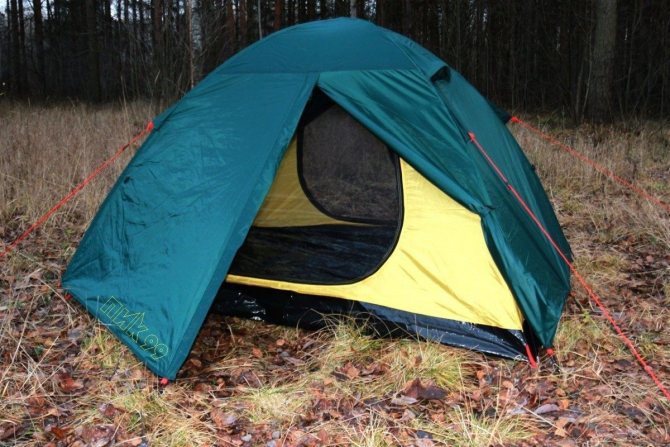
The B-Trace Scout tent with a fiberglass frame is designed for short outings in nature.
- durapole - plastic reinforced with duralumin mesh. It is more reliable than fiberglass, but over time it also becomes less durable. Can be used both for camping and for hiking along the route. Such a tent can be assembled and disassembled every day, but a durapol frame is heavier than a metal one and less durable.
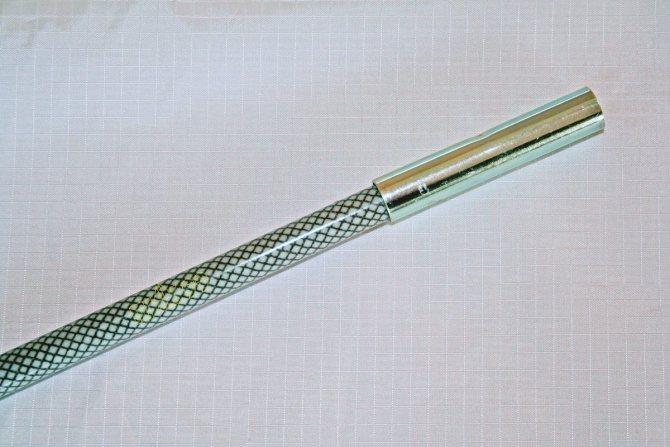
Arc made of durapol - suitable for frequent assembly and disassembly, but heavier and lasts less than metal
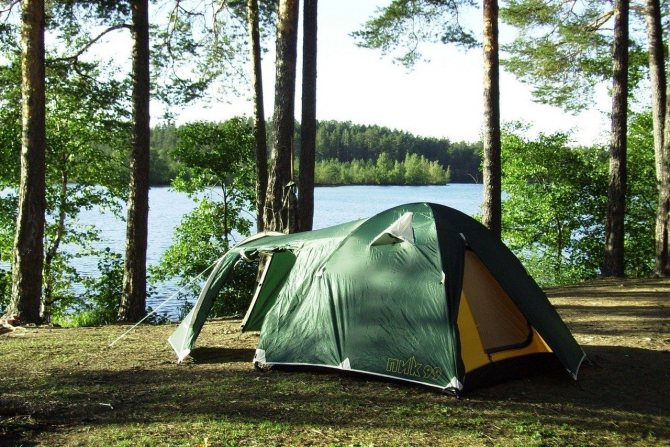
A tent on a frame made of durapol RockLand Discoverer-3+ is suitable for organizing a camp in the forest, on a lake, while hunting or fishing
Metal
The material is tough and durable. A tent on such a frame stands firmly and allows for a lot of assembly/disassembly. It does not age from the sun, retains its strength for a long time and is not afraid of frost.
Metal itself is heavier than plastic, but since it is rigid and durable, the frames are made from thin-walled tubes. As a result, the weight of a metal frame is less than that of a plastic one.
A metal frame is a way to reduce the weight of a tent and extend its durability . After all, the first thing that fails in plastic tents is the frame.
The larger the tent, the heavier it is, the longer the poles, the greater the load on them. Accordingly, they must have a larger diameter.
Let us give the optimal diameters of metal arcs. Thick poles in a 1-person tent are meaningless - it will make the structure heavier and more expensive. The indicated diameters are enough for the tent to stand rooted to the spot:
- 1-seater - ø 8.5 - 9.5 mm;
- 2-3-seater - ø 9.5 - 11 mm;
- 4-seater - ø 10 - 11 mm.
Please note that if, for example, a 4-person tent uses poles ø 8.5 mm, then the tent will sway from touching when entering, even if you reinforce it with guy ropes. And the thin frame gets a lot of weight load - it can start to break. You will not find such tents here.
Unlike plastic, metal can be repaired. If the arc is bent, you can simply straighten it. Broken arches can be repaired even in camping conditions; you will need a repair sleeve.
For lightweight “Spartan” tents, compact packaging is important. Therefore, frames for them are often made from shortened sections about 40 cm long, and not 55 - 60 cm, like regular ones. After all, not only the tent, but also the backpack is compact on the lightweight vehicle.
We have metal frames made of two types of alloys:
- Duralumin grade D16T . The arc is made of ⌀10 mm tubes, with a wall thickness of 1 mm and external adapters. This material has elasticity at small bends, and ductility at large bends.
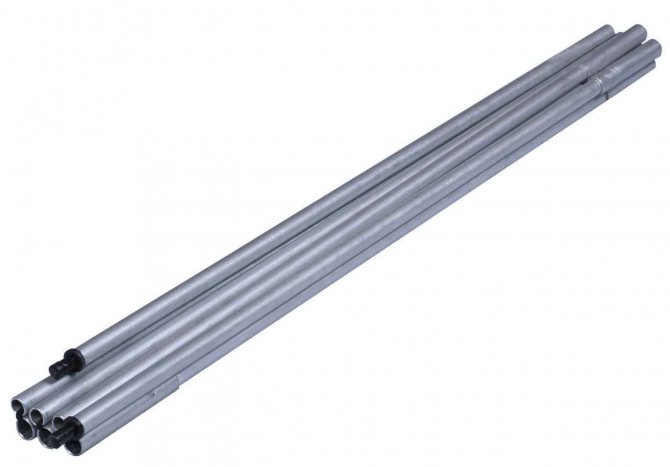
Thanks to the ability to deform and the large wall thickness, the frame is unpretentious and less afraid of accidental impacts. And if you suddenly bend the arc more than necessary, or fall on it, then it will bend rather than break. The bent section can simply be straightened on the spot.
With frequent use, the upper sections of the dome bend, but this does not affect their strength or the rigidity of the structure. With prolonged use, after several years, if the upper sections still lose their elasticity, they can be replaced.
We make RockLand+PIK-99 tents with frames made of D16T duralumin and make poles for separate sale, without tents. If the poles on your tent have broken due to the sharp bend of its shape, then duralumin poles will be the best option. They will bend but not break.
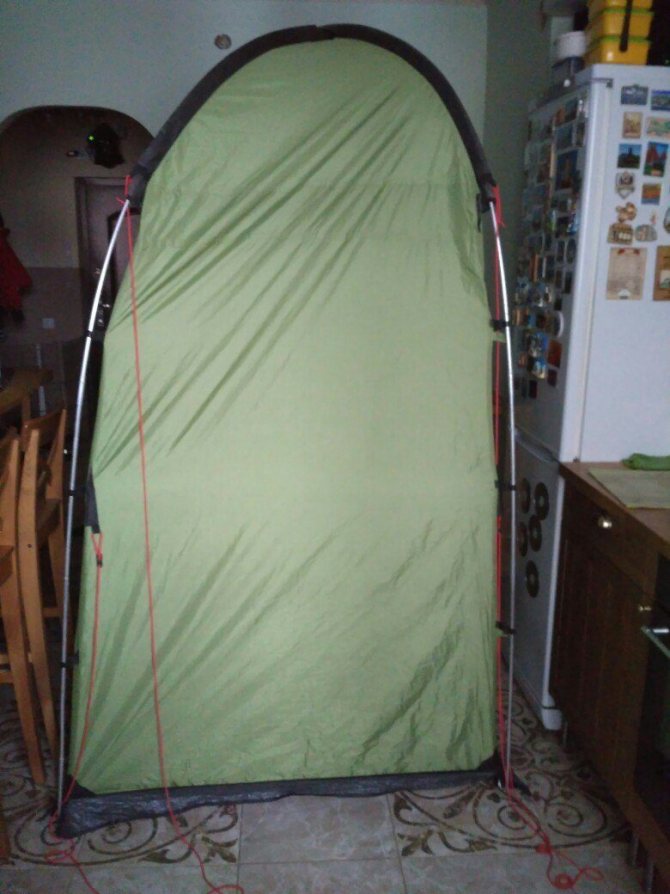
Replacing broken plastic poles with duralumin ones in a sanitary tent. More details - VKontakte report
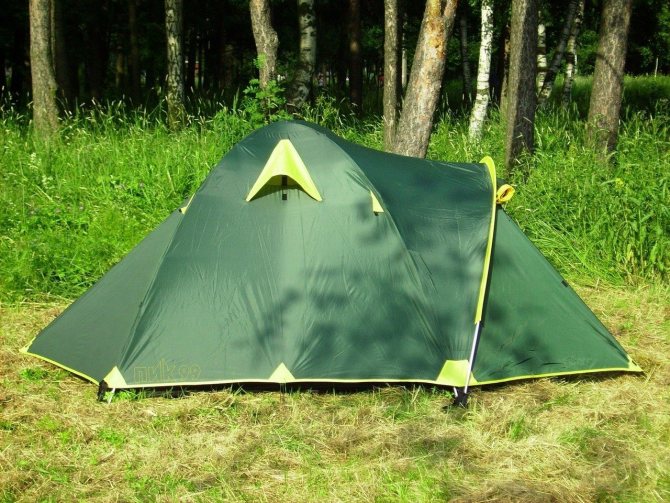
The duralumin frame makes it possible to lighten the construction of large stationary tents. So the four-person tent EZH-4D weighs 4.9 kg - quite light for its class
- aluminum alloy grade 7075 (ALUM 7075) - frames made from it are the lightest (less wall thickness), while being rigid and elastic. We use tubes with a diameter of 9.5 and 11 mm, with a wall thickness of about 0.75 mm. Adapters are internal.
Frames made of alloy 7075 also have disadvantages:
- high price;
- the tubes are thin-walled - if accidentally hit or dropped on the tent, the frame may break;
- the frame does not like sharp bends - take this into account if you change the frame on your tent. All the poles on our tents have a smooth curve.
These frames are practically not subject to residual deformation, therefore they retain their rigidity throughout their service life. We know examples where such frames last more than 10 years.
They are used for tents with which they go out on a route, when they need to be assembled and disassembled every day. Alloy 7075 ø11 mm archwires will be stiffer than ø10 mm D16T, and approximately 15% lighter (because the wall thickness is smaller). Tents with frame 7075 have the highest wind resistance.

We make ultra-light tents using an aluminum frame. Double tourist tent Twice two PIK-99 with this frame weighs only 1.8 kg
Metal frames are elastic, they straighten like springs. Be careful when assembling and disassembling the tent. If the arc accidentally jumps out of the grommet, it can suddenly unbend and hit someone.
Tents come with metal frames, plastic ones... And also wooden ones!
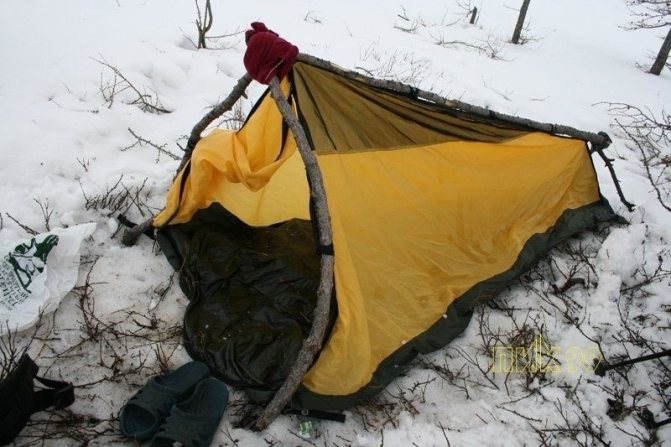
This is our Once Upon a Time Tent. Traveler Alexandra Marchuk once flew off on a hike, forgetting the frame of her house. And the problem was solved this way...
to top >>
Best Hammock Tent
diaochaung3
Discount price
Description
A tent with a hammock, mosquito net and waterproof poncho is the perfect way to spend the night or just relax in nature. Suitable for one, maximum two people. The hammock is stretched between two trees, so not every place is suitable for spending the night. A one-person tent can also be pitched on the ground.
While in a hammock, a person is completely protected from rain or sunlight. Snakes and poisonous insects will not crawl into such a tent. The short distance from the ground also protects the food from wild animals. It is recommended to fasten with slings. Next, a protective mattress and sleeping bag are laid out on the hammock. Design size: 270*140 cm.
The only significant drawback of the tent: you will have to suffer with installation and fastenings between the trees. It is not suitable for a deserted beach, steppe or rocks. The hammock tent is designed for summer, spring or autumn.
It is best to purchase such equipment for traveling into the forest. The anchors should only be attached to strong trees. It is best to choose models with pockets and a mosquito net. The package includes not only aluminum stands and a case, but also special straps for fastening.
More details
Advantages and disadvantages
pros
- hammock made of parachute fabric (70D nylon);
- comfortable placement high from the cold ground;
- aluminum rods;
- light weight (up to 2 kg).
Minuses
- You cannot place a table or folding chair inside.
To the Store
Types of frame - internal or external
The frame can be external or internal. The order of installation of the tent, the ease of its assembly and wind resistance depend on this.
Most tents have an internal frame - it is located under the awning. Therefore, first the inner tent is put up on the frame, then the awning is thrown over. In a rainstorm, it is better to assemble the house under a group tent, and then move it to the right place to protect the inner tent from water. This design is easier and faster to assemble than with an external frame.

The PIK-99 Joy-3D tent with an internal duralumin frame and two vestibules is an example of the easiest tent to install. Suitable for any type of hike
With an external frame, the arcs are inserted into tent pockets sewn on the outside.
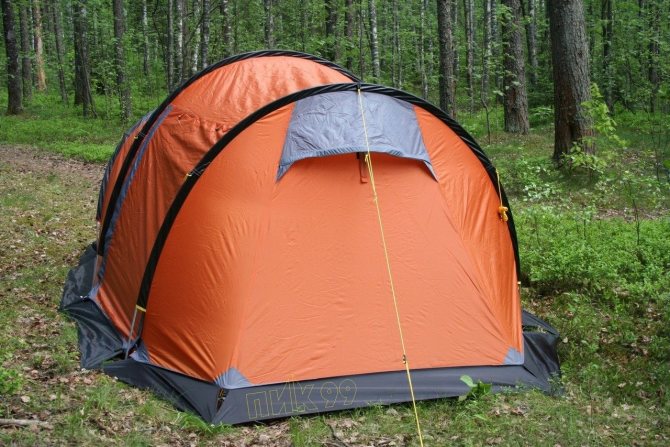
The RockLand Pipe-3 tent is an example of an outer frame tent. In the rain you will hang the inner tent “under the roof”
First, the awning is installed, then the inner tent is hung. Mountain tents are made with this frame - they are more wind-resistant. The outer frame is convenient in the rain; you can put up a tent without getting the inside wet. The wind will also not become an obstacle to installation - the awning is fixed and will not flutter like a raincoat.
But a tent with an external frame is more difficult to set up and dismantle. The arcs must be carefully pushed into the pockets: if you rush and try to push them through, the sections will separate. Therefore, for ordinary tourist tents, the outer frame is rarely used. But in camping ones - often, because they are installed once every few days and the increase in installation time is not important. The dryness of the assembly in the rain and increased wind resistance with their large sizes are clear advantages.

The BTrace Dome-3 tent with an external frame can be assembled in the rain without getting the living compartment wet
to top >>
Tent setup
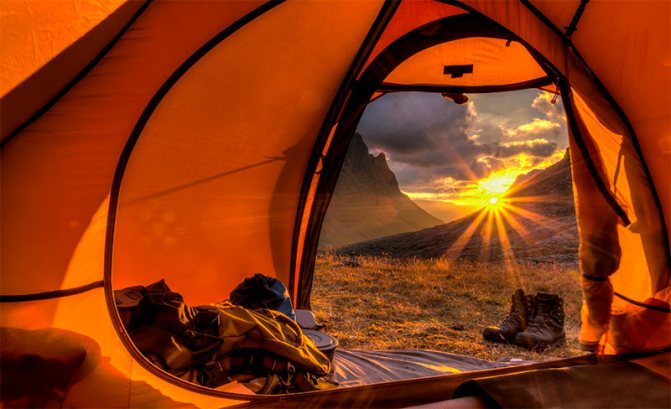
A trip to nature can last for several days, but a hiking trip lasts 2-3 weeks. You can’t do without a roof over your head, and there’s simply no better temporary protection from the weather than a tent. This temporary home is used by tourists, geologists, archaeologists, climbers and simple weekenders outside the city.
A modern tent has a simple design, the basis of which is a frame made of light and durable poles made of aluminum or fiberglass. They give the temporary structure its shape, and an awning is used to protect it from wind, bad weather and cold. It can be single-layer or multi-layer, but must be made of waterproof material. The bottom of the tent is made from denser material, which becomes protection from water flows after rain and forest dampness. The tent can be equipped with additional elements - vestibule, skirt, ventilation system, windows, mosquito nets.
6. Entrances-vestibules - compact pull-out or spacious on an arc
The comfort of the tent depends on the number and area of the vestibules - the spacious one can accommodate a dining room, and the small one can only accommodate shoes or a backpack. If the tent has two entrances, it creates flowing ventilation. It’s also more convenient to get in and out: you don’t have to climb through all the neighbors. But with an increase in the number and size of vestibules, the weight, assembly time and price of the tent increase.
Tambours can be large and small.
Triangular pull vestibule
The lightest and most budget option, suitable for hiking. The structure is stretched with one peg, the entrance is with one zipper. In the vestibule you can put a backpack, dishes after dinner, and shoes.
The downside is that you leave the inner tent, stick your head out, and it ends up on the street. If it rains there, it immediately drips on you. You either have to come to terms with this, or go hiking only in good weather. Or you can stretch a group awning over the entrance.
There are usually one or two such vestibules in a tent.
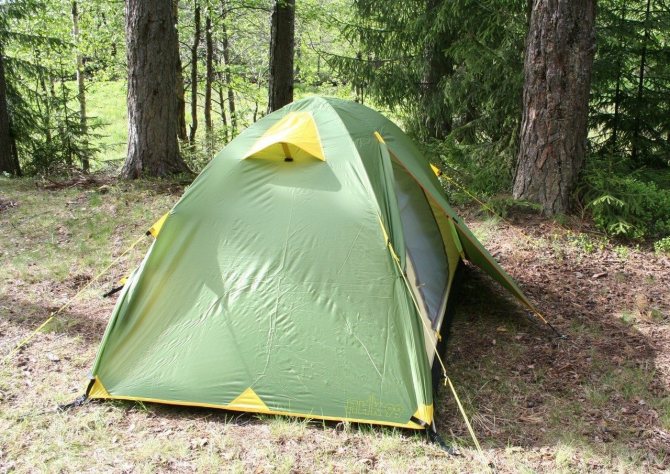
The pull-out vestibule is small - can accommodate a backpack, shoes, cookware-burner
Tambour on an additional arch
A separate arc is located in front of the entrance and holds the vestibule. This option is heavier, but more comfortable. It will take a little longer to assemble the tent; it is more suitable for a permanent camp.
It is more convenient to go out from the inner tent in the rain - there is a roof over your head. This vestibule is significantly more spacious than a triangular one and can accommodate more things.
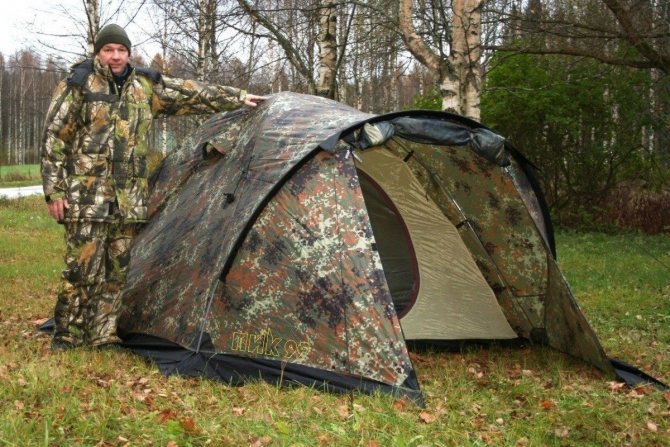
The photo of the RockLand Pamir-3 tent clearly shows how such a vestibule is constructed. Usually closed with two parallel zippers, forming a wide entrance
Another option is that the additional arc is located at a distance from the inner tent - the vestibule turns out to be large, in the form of a tunnel (that’s what it’s called). In this you can not only store things, but also have lunch in bad weather.

The vestibule of the GreenLand Traveler-3 tent can accommodate not only a dog, but also a person
Tents with a vestibule on the arc usually have a second entrance with a small triangular vestibule. This makes it possible to make air flow through on a hot day.
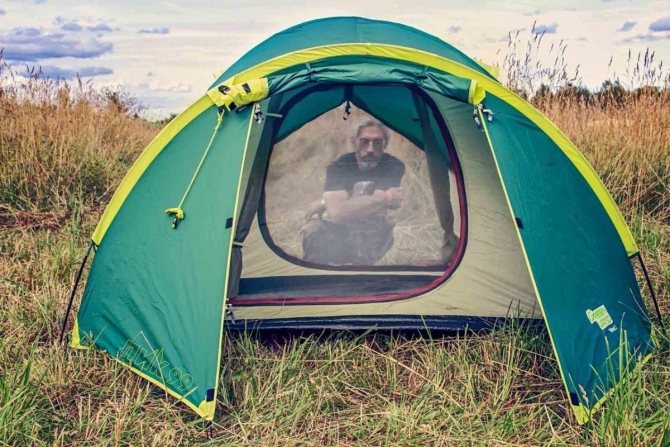
Example - GreenLand West-3 tent - two vestibules, one on a separate arc - cross ventilation
The half-barrel tent has an additional arc that holds the vestibule. It has more space, you can put several backpacks, leave a bike or have lunch in bad weather.
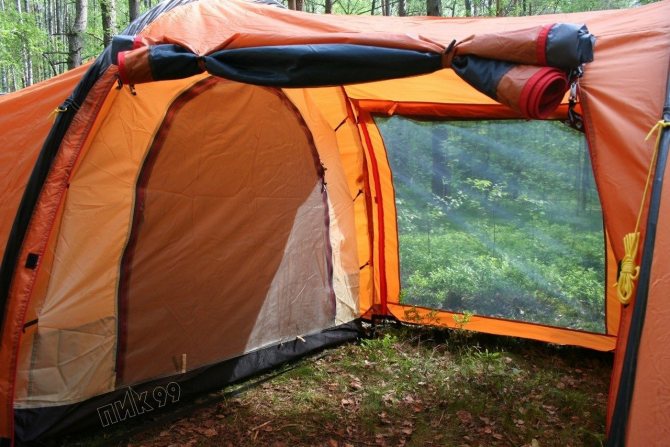
High and spacious vestibule of the RockLand Pipe-3 tent
Tambours on a short cantilever arch
In a hemispherical tent, at the top of the dome there is a short arc that makes the vestibule higher. It is more spacious than a regular pull-out. This is an intermediate option between a triangular vestibule and a vestibule on a separate arc.
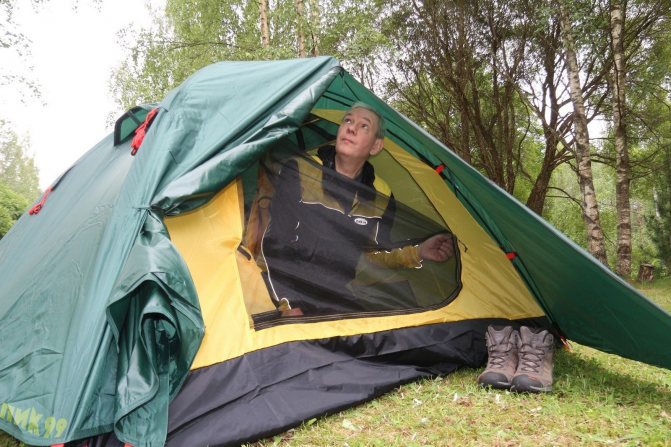
In the BTrace Vang-3 tent there is no dripping on your head when leaving :-))
There is no added seating space, but there is no dripping on your head when you go out. The most important thing is that the weight does not increase much. These tents are also quick to set up. Therefore, they are popular for hiking and cycling trips. There are always two vestibules.
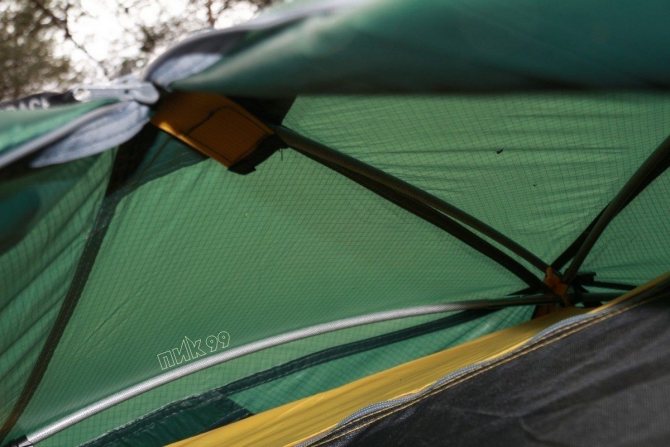
This is what a cantilever arch looks like using the BTrace Cloud-3 tent as an example
to top >>
Beach tents
KEUMER
Discount price
Description
Sun protection and wind resistance are very important for a beach tent. The model is lightweight (just over kg due to its single-layer design) and bright design. The tent opens automatically. Once opened, it is left with a huge vent and a UV protected roof.
The size of such a tent is approximately 200*120*130 cm. Despite its apparent lightness, the walls and ceiling can withstand light rain.
A beach tent is an ideal play area for children. You can hide in it in the heat of the sun, relax or eat. The kit includes small pegs for mounting. They do not always withstand strong winds, so it is better to take care of additional fastenings in advance.
More details
Advantages and disadvantages
pros
- mesh insect curtain;
- waterproof and UV protection;
- compact (easily fits into a beach bag).
Minuses
- in strong winds the tent may fly away;
- open back.
To the Store
Video review
Tent S-T808
Discount price
Description
A tent with a mosquito net is designed for 1-2 people only. Available only in one blue color with transparent inserts. Design size: 200*120*130 cm. Externally, the beach “house” looks like a tent if you fasten the curtain, and not lower it like a canopy.
You can take the tent with you not only to the beach, but also to any forest picnic or fishing trip. After use, it is advisable to shake out all the sand, as there may be a lot of it.
More details
Advantages and disadvantages
pros
- light weight 1.25 kg;
- reliable UV protection;
- heavy-duty fabric 170 T;
- wind resistance.
Minuses
- one layer of fabric;
- case in the form of a soft package.
To the Store
Two layers - to protect against cold and moisture
All the tents we offer are two-layer. A two-layer tent with tightly taped seams is a reliable and high-quality item. Inside there is a living compartment made of breathable fabric, which has a waterproof bottom. A waterproof awning covers the top.
There is a layer of air between the inner tent and the awning; it works like a window frame: it holds the heat and prevents it from escaping outside. This is not the case in a single-layer tent, so it is much colder there.
Also, when you sleep, when you breathe, water vapor is released, which condenses on the walls of the tent and flows down. Therefore, usually the awning is always wet from the inside in the morning, especially in the rain. This is condensation, not an awning leak.
In a single-layer tent, the sleeping bag may touch the awning and get wet. In a two-layer tent, moisture flows down the flysheet to the ground outside the inner tent, so things in the living compartment will be dry.
The gap between the inner tent and the awning must be large enough so that the wet awning does not touch the inner tent when it becomes damp and sagging.

If the wall is long, an additional guy on the peg is placed on the awning. Tent BTrace Cloud-3
We do not sell single-layer tents - they are only comfortable when it is dry and warm. They are usually made of waterproof fabric, so during rain and cool weather, condensation accumulates on the walls and drips down onto tourists.
There are single-layer models for light walking and mountain climbing made of membrane fabric; they breathe, but condensation still forms. To make it drip less on the residents, a membrane fabric that is not the same as on jackets is used. The price is very high, and the range of applications is narrow and specific.
to top >>
Camping tents
Tent S-T390
Discount price
Description
A multi-person camping tent weighs much more than a regular tourist tent (up to 20 kg). It is characterized by a large height (you can walk in at full height, rather than crawling), division into zones (rooms) and an internal vestibule for shoes and things. The large room can comfortably accommodate up to 5-12 people.
Camping tents can be quite spacious, but are not designed for quick deployment in bad weather. It will take at least 10-15 minutes to secure a temporary shelter. A camping tent can accommodate a table, chairs inside, and even a cot. The sleeping areas are equipped with a separate entrance, which is closed with a zipper.
All seams in the tent are taped with shrink tape to prevent rain drops from getting inside. In such a house you can install a camp kitchen, as well as equip a warehouse for storing tourist or fishing equipment.
More details
Advantages and disadvantages
pros
- high index of water permeability of the awning;
- plenty of space to accommodate a large group or family;
- not one, but many exits;
- thoughtful design (dividing the room into a hall and sleeping areas).
Minuses
- difficult installation due to large size;
- heavy weight (up to 20-30 kg).
To the Store
Video review
Tent TY-3017
Discount price
Description
A large half-barrel tent is designed for 5-8 people. The rooms are isolated from each other, which creates the illusion of a real home. A mosquito net protects vacationers from mosquitoes.
Condensation does not appear in such a tent, since it has a double layer and polyester is present in the material structure. The basis of the structure is fiberglass brackets that do not bend or break. Model size; 480*310*210 cm.
Camping tents are very convenient for long stays. You can safely spend your entire vacation in them during the warm season. The ceiling height is more than two meters. You can equip an awning on pegs for the dining area.
More details
Advantages and disadvantages
pros
- two windows on each side (five windows in total);
- waterproof durable fabric;
- fiberglass rods;
- weight about 10 kg (less than many other models).
Minuses
- only one bedroom and two living rooms;
- there is no isolating door between the halls.
To the Store
Video review
HUI LINGYANG
Discount price
Description
A camping tent in the shape of a hemisphere is designed for 3-4 people. The ceiling height is 2 meters and the length is almost 3 meters. The house has four windows and several spacious doors. Design size: 280*200*120 cm.
The house is suitable for picnics in nature, beach holidays and short walks. A special tulle is provided to protect against insects. At the entrance there are hooks for backpacks and other equipment.
The tent has transparent windows, so it is light inside during the day. The design is very rigid and wind resistant. The tent easily folds into a round cover that can be carried like a shoulder bag.
More details
Advantages and disadvantages
pros
- durable 190T Dacron fabric;
- fiberglass rod;
- waterproof coefficient 3 thousand mm;
- weight 4.5 kg.
Minuses
- suitable only for a small family or company;
- lack of a large vestibule (only shoes and a couple of backpacks can fit);
- there is no awning for the “visor”.
To the Store
Video review
Entrances with mosquito nets and windows for cross-ventilation
In quality camping tents, ventilation is provided through doors and windows. The windows are on the top of the dome of the inner tent.
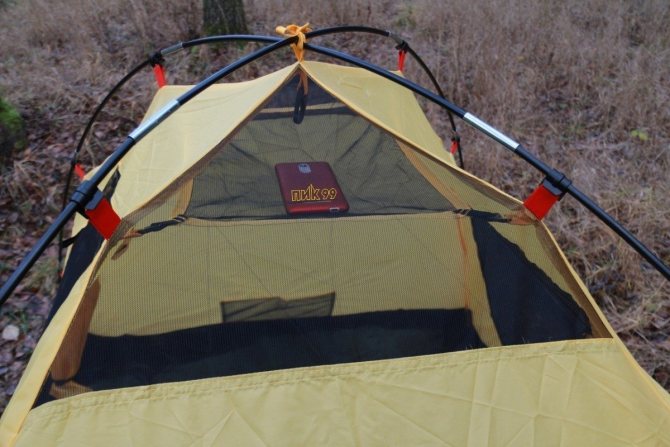
For better ventilation it is necessary to have large windows
The awning has adjustable ventilation valves - these are usually open. They have to be closed if it starts to rain and wind, so as not to flood inside.
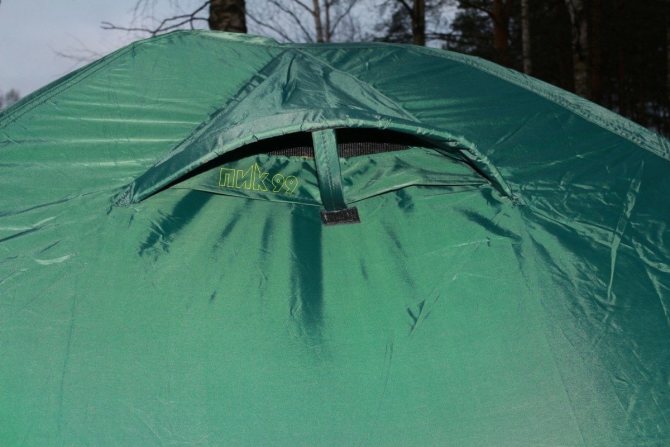
It is better to close the ventilation valve on the roof of the tent if it starts to rain heavily
Ventilation works like this: fresh air enters the tent from below, passing between the awning and the ground. And the heated air rises up, under the canopy dome, and exits through the ventilation holes.
If you find yourself on a windswept hill in cold weather, the heat will be blown out of the tent through the ventilation. Throw a jacket, T-shirt, and bike cover over the ventilation windows on top of the dome of the inner tent (under the awning) and reduce their area.
In hot weather, ventilation is also provided through the doors. They are duplicated with an anti-mosquito net - it saves from insects. The mesh cells are small, so midges and midges will not fly through them. The design is held on by double zippers - one opens the tent door, the second holds the mesh.
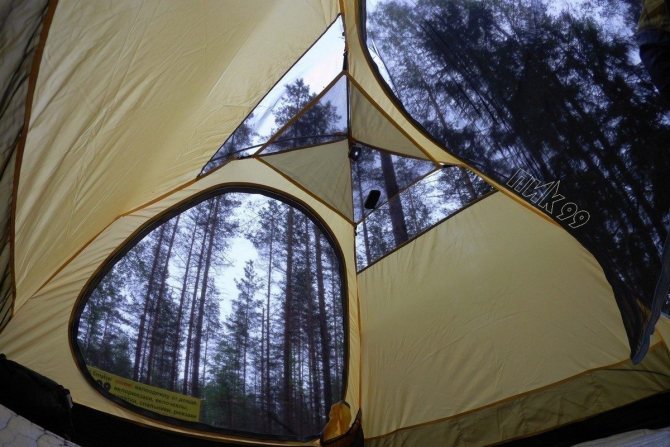
When it's hot, the door fabric can be unfastened and only the mesh is left
If the tent has two exits, the doors can be opened, leaving a mesh on them - this creates cross-ventilation. At the same time, thanks to the mesh on the doors, insects will not get to you.
In tourist tents for a stationary camp, mesh can double as a door to the vestibule.
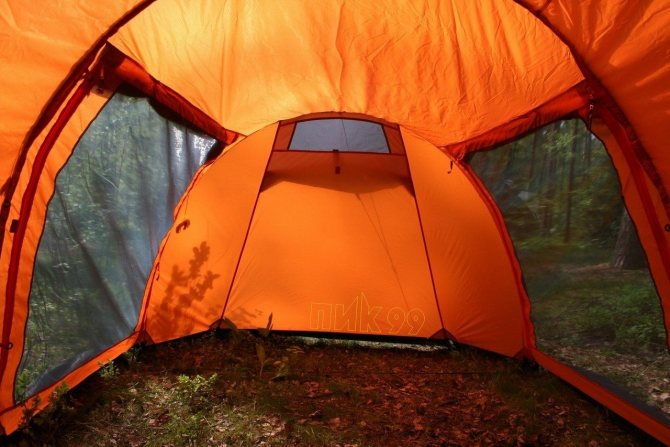
When you get ready to have lunch in such a vestibule, mosquitoes and midges will not bother you
In some tourist tents, a “skirt” is sewn to the awning - it performs two functions:
- prevents insects from flying under the awning;
- insulates in windy and cold weather.
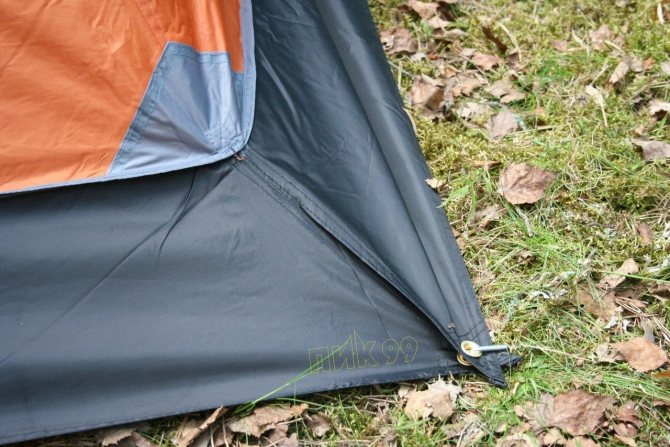
The “skirt” may have eyelets through which it is pinned to the ground with a peg so that it does not flutter
But the “skirt” blocks the ventilation gap between the ground and the awning. Therefore, when it’s hot, you need to tuck your skirt.
to top >>
Doors and windows
If you take a tent with increased capacity, then there should be two or more entrances. This way you can leave and come in without interfering with each other.
Windows only make sense for camping: with them the environment becomes similar to “at home”. In tourist products there is nothing special to look at from the window, and the slightly open door zipper and ventilation valves will cope with ventilation.
If the hole is lined with a mosquito net, you can open the entrance slightly without fear of being eaten by blood-sucking insects.
Zippers should be unfastened and fastened without problems (preferably with one hand). Make sure that the protective strip or part of the awning does not fall into them.

9. Waterproof awning and bottom for protection from rain and dampness
The inhabitants and things inside the tent should not get wet from the rain - a waterproof outer awning will save you from this. Its water resistance is measured in millimeters of water. A drop of rain falling from a height creates a pressure of 2,000 mm of water column. A fabric that can withstand 3,000 mm is considered waterproof.
The waterproof layer is formed by applying a polyurethane coating, designated as PU 3000 mm water column. This is precisely the value - water resistance of 3,000 mm - that we indicate in the characteristics of our lightweight tents. These are advanced high-tech tents.
But in the descriptions of some entry-level tents on a fiberglass frame in stores you can find a value of 4,000 mm, at a higher level of tents - already 6,000 mm. How so? What's the catch here?
Many millimeters are partly a marketing ploy. Tent manufacturers compete to see who can write the most. You can also find statements on the Internet that water resistance of 2,000 - 3,000 mm is suitable for short hikes, 4,000 - 6,000 mm for long ones. But it can flood with rain in one night.
In fact, 3,000 mm is enough for an awning, if they really exist and are preserved during operation. For our tents we use fabric whose characteristics include water resistance of 3,000 mm water column. But when tested on a special press, the new fabric shows values of 10,000 mm (because this is the scale limit on the device).
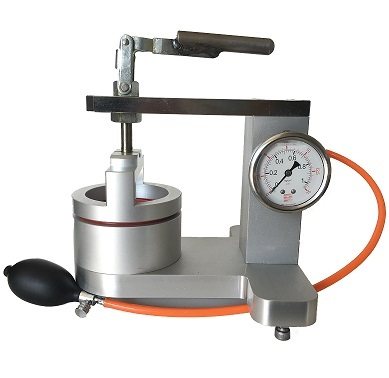
Press for measuring the water resistance of a tent. The maximum value it can push is 10,000 mm
And after several years of using our tents, they do not leak, which means they retain their water resistance at a level of at least 3,000 mm. You could also write about our fabric on light tents - 6,000 or 8,000 mm.
High water resistance can be excessive - it leads to both an increase in the cost of the fabric and a significant increase in its weight. The thicker the waterproof coating is, the heavier the fabric - which means the heavier the tent.
The bottom of the tent experiences greater water loads than the awning. Because when moving inside the tent, you rest on the bottom with your knees and elbows, and high pressure arises in this place. If you have a puddle under the bottom of the tent, and you stand on the bottom with your knee, then the pressure at this point reaches 5,000 mm of water. Art. If with a sharp elbow, then up to 10,000 mm.
It would seem that the bottom should be made as waterproof as possible. But this is weight gain. To save grams, we use the same fabric for the bottom of light tents as for awnings - 3,000 mm. Practice shows that this is enough. If it is wet under the bottom of your tent, try to lean your knee or elbow through the mat.
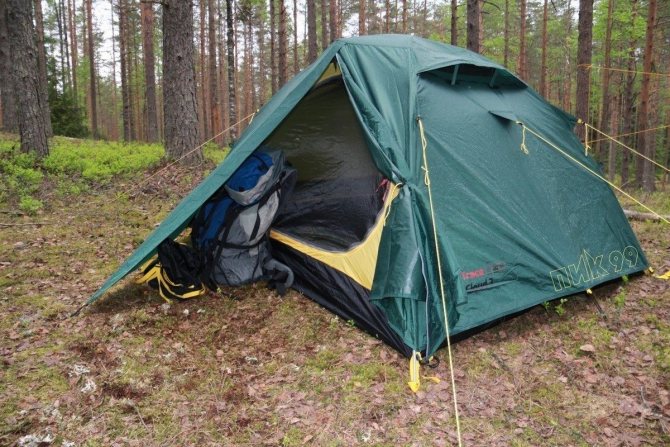
BTrace Cloud-3 hemisphere tent with awning water resistance 6,000 mm h. Art., bottom - 8,000 mm h. Art.
In addition to the waterproof coating on the inside, the awning fabric has a water-repellent coating (WR - water repellent) on the outside. Therefore, the water collects in drops and flows to the ground. This is another way of protection - the fabric does not get wet. Silicone coating works in a similar way to WR.
But moisture can still get inside through holes in the seams, so the seams must be taped (special protective tape is welded with hot air), otherwise the awning will begin to leak over time.
If the silicone coating is double-sided, the seams cannot be glued. Therefore, it is best to use a fabric that has silicone on one side and polyurethane (hereinafter referred to as PU) on the other, then you can glue the seam. Silicone coating is used in lightweight tent fabrics. With it, the fabric can be made lighter, but also more expensive. If there are connecting seams at the bottom, they must also be glued.
In budget models, the bottom is made of terpowling - a material made of interwoven strips of polyethylene, which is laminated on both sides. It is completely waterproof and inexpensive, but it is heavier than fabric and takes up more space in the package. Water resistance is indicated at 10,000 mm - this is simply the measurement limit of the device on which it is tested. In more expensive models, the bottom is made of waterproof fabric.
Over time, exposure to sunlight reduces the water resistance of the coating. The more it was at the beginning, the longer the fabric will remain water resistant.
Water-repellent properties can be restored by treating with water-repellent impregnation. This is a WR application.
In other stores you can find tents with a water resistance of 1,500 mm, usually quite cheap. They are designed for short trips in good weather. They can handle a drizzle, but if it rains heavily, you’ll have to pack up and go home. As an option, stretch an awning over such a tent.
to top >>
Bottom
The bottom experiences high loads: pressure from the human body, stones and grass, water, snow. And therefore it is made from more durable fabrics than the main fabric. The bottom of a good tent should be waterproof to at least 5,000 mm water column. It is better to choose products with high sides of the bottom. This significantly reduces the risk of getting wet.
For the bottom, terpawling is often used. This is reinforced polyethylene with very good moisture resistance. It is cheaper than nylon, but heavier. In addition, it can be broken or pierced.
There are models with a skirt - this is a strip of fabric around the perimeter of the tent. It prevents cold air from blowing in and snow and water from getting between the awnings. Can be made removable or sewn on. Good for winter hikes, as it helps maintain a comfortable temperature inside. In summer and on mountain expeditions, in most cases it only makes luggage heavier.
Additional elements of tents - for comfortable accommodation
Camping tents have parts that will help distribute things and make the placement process easier. Thanks to them, there will be no excess on the floor of the living compartment - there will be free space for relaxation.
Pockets
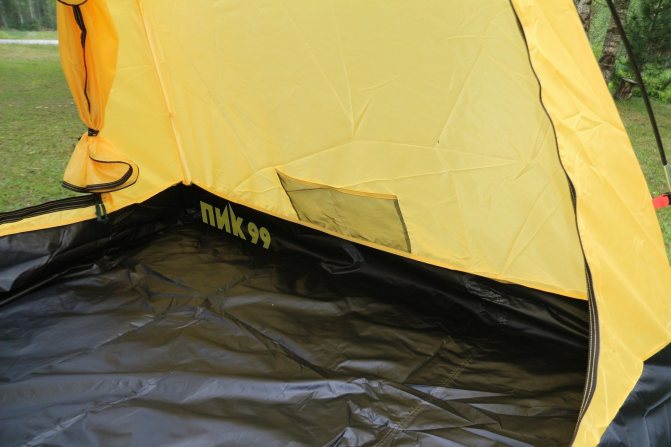
Pockets in the inner tent are useful for storing medium to small items. Usually they are made of fabric or mesh with several compartments, they are sewn on the walls in the living compartment. They are convenient for storing, for example, a watch, phone, flashlight, insect repellent or cosmetic bag.
Hanging shelves
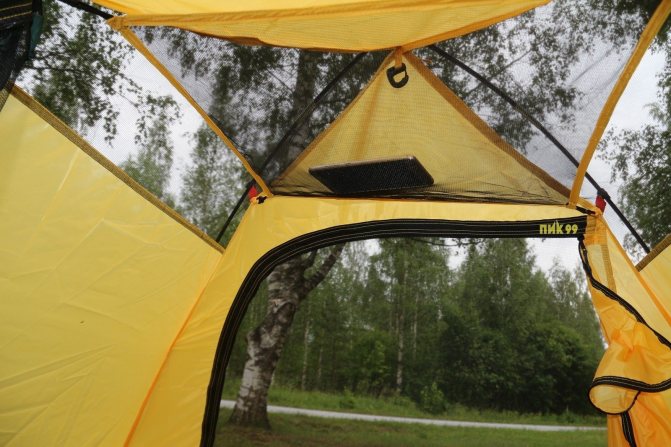
Mesh shelves are convenient for storing small items or clothes. They are hung under the dome of the tent.
Flashlight hook
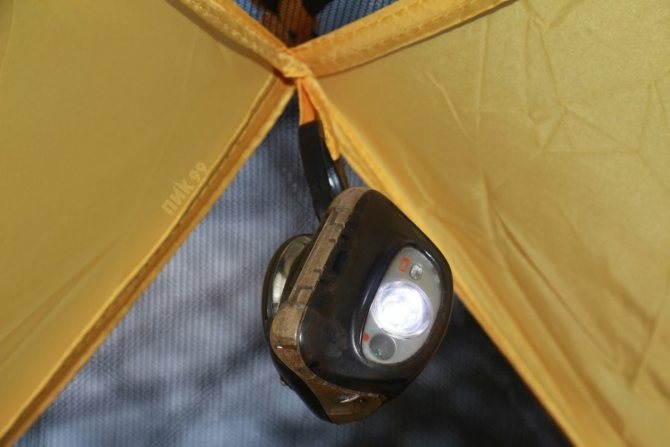
Indispensable at night or in the evening. The flashlight can be hung from the ceiling - it will be like a light bulb in the apartment.
Experienced tourists have a trick - they know that there is always warm air under the dome. Therefore, you can stretch a rope there and dry things. Sometimes a hanging shelf is used for this.
to top >>
Automatic tents
SAMCAMEL
Discount price
Description
The original tent in the form of a hexagon or gazebo unfolds automatically and can be used for both camping and the beach. The diagonal type of stretch makes this tent very comfortable for 4-6 people. The upgraded spring bracket allows you to open it in 5 minutes.
The tents are designed with double doors and high density mesh to provide a mosquito repellent effect while still allowing ventilation inside. The hexagonal tented gazebo has large windows and a spacious entrance.
When assembled, automatic tents take up approximately 68 cm. You can’t put them in a backpack, but such a set will fit in the trunk without any problems. The size of a large “house” is 245*245*165 cm, and a small one (for a couple of people) is 210*140*110 cm. The external water resistance index is small: 3000 mm, but this is quite enough for summer rain.
More details
Advantages and disadvantages
pros
- fiberglass pole;
- waterproof awning;
- two reliable layers;
- automatic folding.
Minuses
- one sleeping area for everyone and no vestibule.
To the Store
Video review
Automatic tent
Discount price
Description
The tent for 1-2 and 3-4 people is made in the form of a hemisphere. The inner layer of the tent is made of silver plastic fabric that attenuates ultraviolet rays. The tent can be used for outdoor recreation or a short hike.
The model is made with Oxford embossing and two layers of fabric. They can be used in late autumn and early winter. The advantage of the automatic model is that it unfolds very quickly due to the spring bracket.
The tents are designed with high-density mesh to protect campers from insects and provide ventilation inside. Size depends on capacity. For 1-2 people: 210*140*110 cm, and for 3-4 people: 10*200*135 cm.
More details
Advantages and disadvantages
pros
- 210D Oxford fabric;
- fiberglass rods;
- waterproof protection.
- through exit.
Minuses
- no vestibule for things;
- limited space (only for sleeping);
- heavy weight (up to 3 kg).
To the Store
Video review
Related products - what else can be useful on a hike?
These things will make life easier for tourists - they will allow you to set up a tent on almost any soil, quickly repair it on a hike, or make sure that no one trips over the guy ropes at night:
|
- screw pegs - needed to ensure that the tent stands firmly on loose soil or sand. In sand, an ordinary peg does not hold the tension well, but a screw peg does much better;
- water-repellent impregnation - restores the waterproof properties of fabrics. As a tent's canvas gets old, it begins to leak water. With this impregnation you can “reanimate” an old tent;
- Repair kit - will help you repair your tent while camping. The kit includes pieces of fabric for the inner tent, awning and mosquito net, as well as glue;
|
|
|
- reflective streamers - clearly visible in the light of the moon, flashlight or fire. You won’t stumble over these in the dark;
- tent poles - useful for repairs. If you have lost or broken the poles, you can buy new ones (a whole pole or a section of the desired type and diameter), rather than spending money on a whole tent.
To see the tents in person, come to the store at our production site in St. Petersburg. The warranty period for PIK-99 products is 2 years, for partner products - 1 year. Delivery throughout Russia, payment upon receipt.
If you have any questions about choosing a tent, write to our VKontakte group. We will be happy to answer them.
to top >>
Top – 3 Best Single Person Automatic Tents in 2020
CleanWaste D117PUP
1 place
Dimensions are standard for single awnings: 200x120x120 cm.
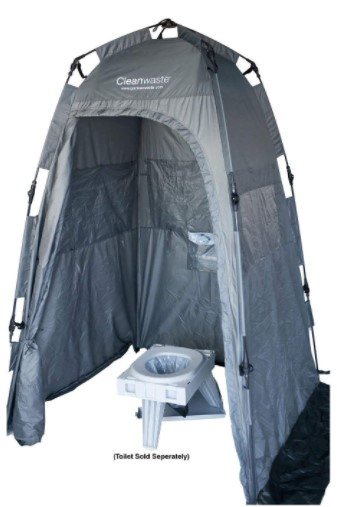
| Options | Characteristic |
| Purpose | toilet/shower |
| Form | umbrella |
| Tambour | No |
| Window | depends on the selected configuration (1/3) |
| Material outer/inner layer | composite materials |
| Mosquito net | There is |
| Ventilation | There is |
| average price | 5600 rub. |
CleanWaste D117PUP
Advantages:
- easy to use;
- not afraid of thunderstorms;
- spacious inside.
Flaws:
- it is difficult for tall people to stand at full height inside;
- the shadows of the people inside are visible outside.
The tent has no bottom and has side pockets for toiletries. There are also awnings that provide additional protection from rain and strong winds.
Envision 2
2nd place
Size: 150x220x110 cm.
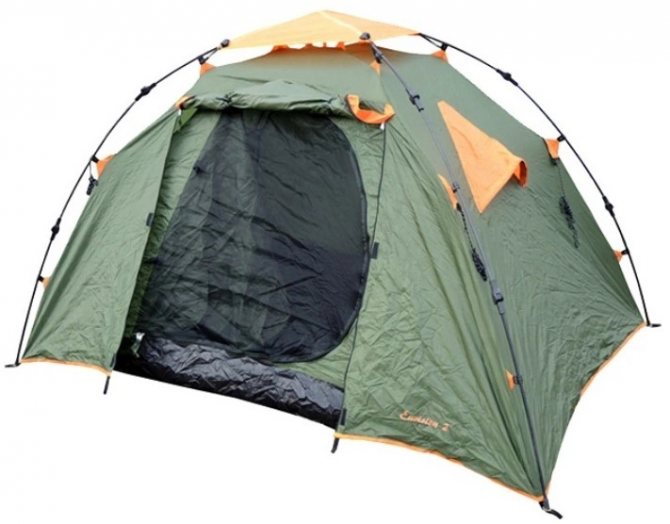
| Options | Characteristic |
| Purpose | trekking/camping |
| Form | hemisphere |
| Tambour | There is |
| Window | 1 |
| Material outer/inner layer | polyester waterproof/breathable |
| Mosquito net | There is |
| Ventilation | There is |
| average price | 6200 rub. |
Envision 2
Advantages:
- two-layer;
- light weight;
- durability;
- waterproof floor;
- storm guy ropes;
- three-layer awning.
Flaws:
- lack of windproof skirt.
The FlashTouch system allows for fairly quick installation. Tourists note that this sometimes takes literally no more than a minute, if you don’t take into account that you still need to drive pegs into the ground. And despite the fact that the tent is single, there is a lot of space there.
Travel John Privacy Tent
3rd place
The height in the center does not exceed two meters (183 cm), the floor area is 122x122 cm.
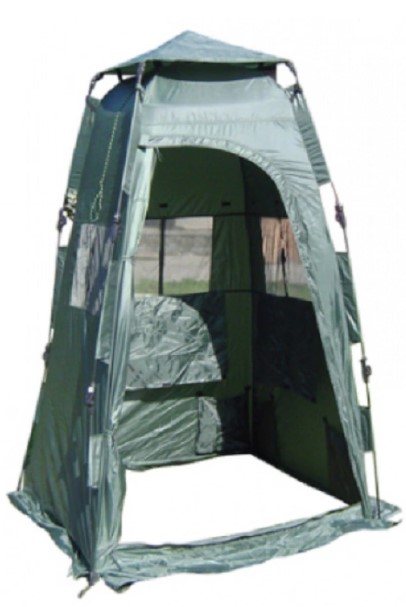
| Options | Characteristic |
| Purpose | shower/toilet/shelter |
| Form | tent |
| Tambour | There is |
| Window | 3 |
| Material outer/inner layer | composite materials |
| Mosquito net | There is |
| Ventilation | There is |
| average price | 6200 rub. |
Travel John Privacy Tent
Advantages:
- light weight;
- design;
- compactness;
- versatility.
Flaws:
- Not detected.
The silver mechanism helps to deal with the installation in a matter of seconds. The roof is made of mesh fabric, which is additionally protected by a dense, fire-resistant and waterproof coating. The frame is very strong, so even significant loads are not dangerous to the structure.
Single-seat “automatic machines” are mainly designed specifically for a camp shower or toilet.
3) So, tourist, all-weather. What should she look like?
Form.
There are many forms of tents, all kinds of modifications and types, but there are only four main types: gable, half-barrel and hemisphere, and the fourth is a combination of several types at the same time (hemisphere and half-barrel).

A “gable” or gable tent is a tent from our past)). We all remember Soviet films about brave rock climbers (with Vysotsky), about all sorts of hikes and halts in adventure films, and so the tents there are exactly like that. If a person, starting from 30 years of age and older, calls the word “tent”, then the association arises with this particular tent, gable or as it was called “pamirka”. The tent has two roof planes, similar to an open book. Such tents were made of tarpaulin, and the frame stakes were made of aluminum, the diameter of which was the size of a 2-ruble coin. Now you can find such a tent, the materials are of course modern, but the shape is almost the same. Such tents are slowly dying out as the most unpopular ones. The windage of such a tent is very high, in a heavy wind it will simply fly away, and the pegs will not save you, in any direction of the wind. Another disadvantage of assembling such a tent is that the internal stakes (supports) are at right angles, and all corners are stretched by laces on the pegs. When you pull out the peg, the tent immediately loses its shape and collapses. In general, let it remain in the wonderful past, like those memories of that time.

“Hemisphere” , “dome” or “turtle”, all this is one name for a small modern tourist tent, or a large expeditionary mountain tent. The frame of the tent is still made of the same arcs, only crossed in the center. This species can be divided into two subspecies, with two arches, and the second with more than two arches. With two arcs, a tent is usually light in weight, easy to assemble and, as a result, small in capacity, two-seater and less often three-seater. A tent with more than two poles is heavier, has a vestibule and a larger volume. This form of tent is the most popular, since there is almost no windage and this tent is easy to disassemble and assemble. There are even automatic models that open like an umbrella, once... and everything is ready, and assembly takes from one to five minutes. This form is used to create all modern tourist and expedition tents for all weather conditions. If you are going to buy a tent for yourself (single-person), then it will most likely be of this shape. This form of tent is more harmonious on mountain slopes, in forests, in windy steppes; in general, it is all-weather, all-season, lightweight and the fastest in terms of assembly speed.
"Half-barrel." This tent is already modern, and arches are already used as a frame. The arcs are assembled and installed parallel to each other. The tent looks like an aircraft hangar or a barrel turned on its side and half buried in the ground, something like that. The windage of such a tent is half that of a gable tent, due to the shape of the main planes, but it is still there. This form is often used when creating camping tents, as it is more convenient when constructing additional rooms and vestibules; such tents often use two entrances. The tent is quite easy to assemble and set up.
“Hybrid” , well, or multiform, or something else, the main thing is that the meaning is clear. This is a tent that combines several shapes, mainly half-barrel and hemisphere. For example, three parallel arcs and one transverse, this shape is used to create all types of tents. Such tents use several entrances, vestibules, awnings and many little things necessary for any type of tent.
Best Trekking Tents
Trekking tents are characterized by excellent ventilation, minimal weight and small dimensions when folded. They are designed for use in normal weather conditions and require installation on relatively level terrain.
Trek Planet Toronto 3 – budget model
4.9
★★★★★
editorial assessment
96%
buyers recommend this product
An inexpensive 3-person tent with well-organized ventilation also has a vestibule to protect things from bad weather. It has a single-layer awning, made of polyester impregnated with silicone (water resistance 1000 mm w.c.). The bottom is reinforced polyethylene.
The outer frame arcs are made of durable polymer material. The main feature of this model is its compact and lightweight design, weighing only 3 kg, which can be installed quickly and easily by one person.
Advantages:
- Light weight;
- Quick assembly compact design;
- Sufficient moisture resistance, plus a lining for protection from rain;
- The presence of a vestibule;
- The price is within 2.5-3 thousand rubles.
Flaws:
- Lack of viewing windows.
Toronto-3 is quite suitable for short outings with friends or family. And most importantly, it is very inexpensive.
BTrace Bike Base – one person tent
4.9
★★★★★
editorial assessment
94%
buyers recommend this product
A durable single-seat model from a domestic manufacturer has a frame made of durable and lightweight polymer, which in its characteristics compares favorably with the fiberglass used by most manufacturers.
The main advantage of this model is a two-layer awning with fire-resistant impregnation, made of dense polyester. It has excellent water resistance at 6000 mm, and even more at the bottom - 8000.
The comfort of living in a tent is ensured by two separate entrances, ventilation windows and a protective insect net. Wind resistance is guaranteed by well-placed storm guy ropes. This tent weighs only 1700 grams.
Advantages:
- Minimum weight;
- High structural strength;
- Increased water resistance of the awning;
- High-quality seams;
- Availability of reflectors;
- Low cost - about 3.5 thousand.
Flaws:
- Lack of viewing windows.
An extremely simple tent that can only fit a sleeping bag will appeal to tourists who prefer a secluded holiday in nature. And due to its light weight, you can safely take it with you both on foot and for cycling.
Philosophical: who is on top: frame or awning?
This is such a long-standing, specific and never-ending dispute.
This concerns another feature of the design of a modern tent: where should the frame arcs be located - on top of the outer awning or under it? Both options are quite common among modern tents. The main benefit of the external location of the frame
is that the inner tent can remain permanently attached to the outer awning. Therefore, by stretching the outer tent, you will automatically “set up” the entire tent, including the inner tent. And in this case, if you put up a tent in the rain, its insides will not get wet. You can disconnect the inner tent from the outer one when you want to clean it or dry it thoroughly.
With a tent in which the frame is located inside
, between the inner tent and the awning, such a number will not work. First you need to put up the inner tent, and then pull the awning on top. If it rains or snows, then all this may end up inside the tent. Especially if you hesitate.
However, such calculations are rather theoretical. In practice, you can put up an inner tent, covering yourself with a tent that has not yet been stretched. Thus reducing subsequent drying to a minimum.
On the other hand, when the frame is external, you are faced with the unpleasant need to insert arch elements into special narrow and long pockets provided for by the design. When the turn of the second arc comes, it is very problematic to do it alone - you try to resort to the help of a partner.
In addition, the design of many such tents is such that with excessive force, the pole rests and tears the fabric of such a pocket. Attention, accuracy and sufficient illumination of the scene are required. It's unpleasant in the wind and rain.
The author of these lines has seen a “dream tent” with an external frame only in photographs by Reinhold Messner from Everest
: there the tent was suspended from the frame using a thin strong cord and many hooks. Alas, such tents today are produced either individually or handicraft.
But where a tent with an external frame definitely loses is the absolute impossibility of folding back the awning
and spend the day/night exclusively inside the inner tent. In the hot sun or stuffy weather, such a luxurious option is simply irreplaceable.
A tent with an external frame seems to be advantageous in the conditions of some multi-day hike in an area blown by hurricane winds. If a pole bursts, it (most likely) will not tear the tent apart with its debris. What would inevitably happen if the frame was located inside, under an external awning, and thereby gave rise to a lot of problems.
Tourist 1-person tent MSR Hubba.
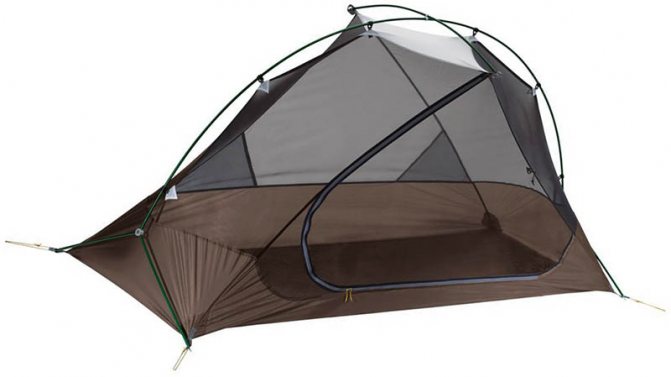
If you're looking for the perfect combination of maximum space, minimum weight, exceptional protection from the elements and ease of setup, then look no further than the MSR Hubba Tent. Its length is 2.18 meters, which allows even a very tall tourist to sleep comfortably in a tent along with his camping equipment. The ceiling height of one meter provides a fairly large interior space. The weight of the MSR Hubba including all accessories is 1.3 kg. The full-length vestibule provides incredible protection from the elements and will also help keep the inside of the tent warm on cold nights. You can attach the vestibule directly to the poles if you want to limit access to the tent. The mesh canopy provides excellent ventilation and serves as a good barrier against harmful insects and other animals. Additionally, you can buy a separate mini-tent for storing camping equipment.
Rating: 4.75/5.
Gable tents
Such models are, to a certain extent, tourist classics.
It is with them that many associate the first campaigns in Soviet and post-Soviet youth. Unlike their counterparts from the past, modern gable tents are more comfortable, reliable and, most importantly, not heavy. This is an ultra-light equipment format for summer overnight stays in non-extreme conditions. They are highly valued by hikers who prefer minimalism and cyclists. It is often used as a spare tent or taken “just in case.” The frame of this model consists of two vertical posts in the front and back of the tent. Sometimes there are options with an additional crossbar. A popular solution among tourists is to install ski or trekking poles instead of racks. Thus, having gotten rid of the frame, it can be folded into a minimum volume and it will not take up much space in the backpack.
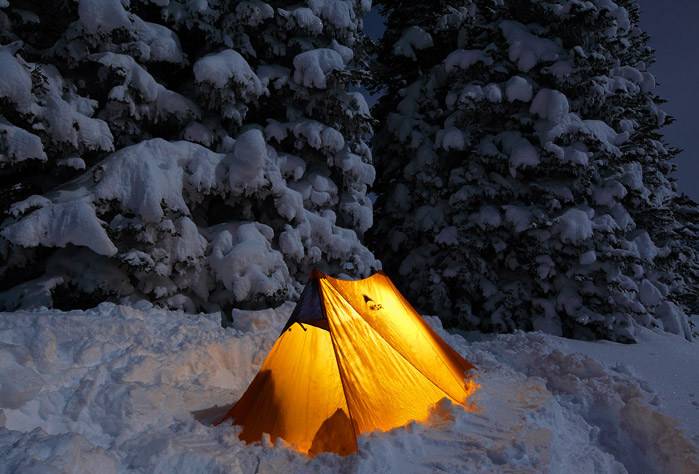
The performance characteristics of such tents depend on three factors: the characteristics of their material, the type of protective impregnation and how correctly you install the guys. Despite all the advantages, you can’t count on a large living space in such models.
How to choose a tent for a hike: the optimal number of seats and weight
If you are going on a spring-autumn hike on Saturday-Sunday, then use a two-person tent or a 2+1 tent. And it doesn’t matter that you have to sleep alone. After all, in fact, the difference in weight for a single-seater and a double-seater is no more than one kilogram. The lightest modern tents weigh only one to two kilograms. But such models cost quite a lot. However, if you are interested in backpacking, it is better to buy a more expensive tent than to carry a heavy structure on your back in a backpack.
The best option, considering the purpose of the tent
A tent for extreme hiking must meet the following parameters:
- Weight – within four to six kilograms;
- Water resistance of at least 4000mm;
- Awning material – polyester;
- Arcs are made of aluminum.

A trekking tent must meet the following parameters:
- Weight – from two to three kilograms;
- The water resistance of the awning is from 1500 to 4000 mm (depending on the duration of the hikes);
- The awning material is nylon with special polyurethane impregnation;
- Arcs are made of aluminum or polymer.
A camping tent must meet the following parameters:
- Weight – within 12-25 kg;
- Water resistance of the awning – from 4000 to 10000 mm;
- Awning material – polyester;
- Arcs made of steel or aluminum.
In addition, pay attention to the total number of entrances to the tent. If it is designed for 6-10 people, then it is better if there are two or three entrances, no less.
